AJH Synth Gemini 2412, Mega-Phase 12 and Finaliser R-EQ Review
Continuing its line of great-sounding products, AJH Synth brings us three tasty new modules, with a hint of nostalgia and heritage. Dave Gale inverts phase… Price £345 each Contact AJH Synth | 07867 008964 Key features: Gemini 2412 Module width 28HP Module depth 34mm Current usage: 50mA Positive, 45mA Negative Two independently controlled filters Low, […]
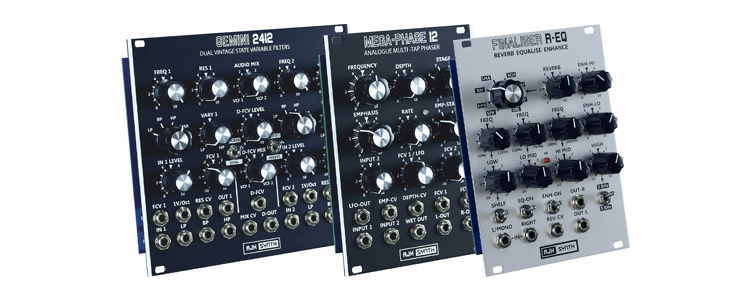
Continuing its line of great-sounding products, AJH Synth brings us three tasty new modules, with a hint of nostalgia and heritage. Dave Gale inverts phase…
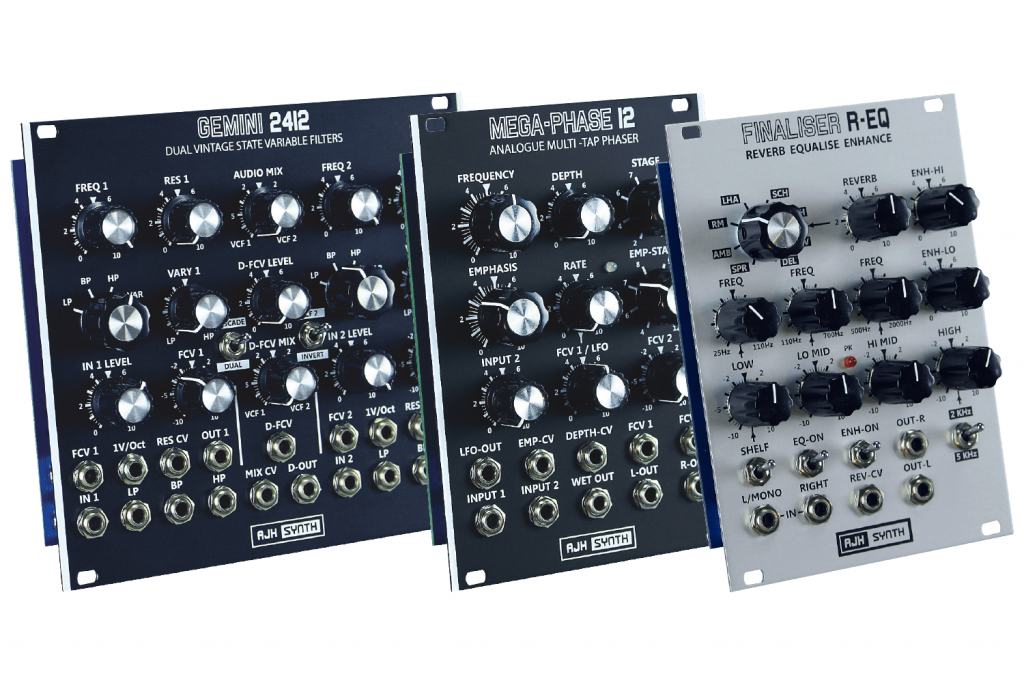

Price £345 each
Contact AJH Synth | 07867 008964
Key features:
- Gemini 2412
- Module width 28HP
- Module depth 34mm
- Current usage: 50mA Positive, 45mA Negative
- Two independently controlled filters
- Low, High, Notch and Band Pass available
- 12dB/2-pole VCF, with 24dB/4-pole capability
- Based on the original Oberheim SEM design
- Mega-Phase 12
- Module width 18HP
- Module depth 34mm
- Current usage: 70mA Positive, 65mA Negative
- Multiple-stage phaser
- All-analogue design
- Mono input, left/right output
- Finaliser R-EQ
- Module width 18HP
- Module depth 34mm
- Current usage: 105mA Positive, 55mA Negative
- Digital reverberator and delay
- Four-band equaliser
- Onboard enhancer
The Eurorack category is positively brimming with every conceivable module these days – so much so, that you’d think there are few places left to turn. So with this in mind, you have to doff your cap to Allan Hall, the mastermind behind AJH Synth, who has managed to come up with some more new angles on old classics, with plenty of surprises in sound and architecture.
Gemini 2412 Filter
The Gemini 2412 filter is a dual, two-pole/12dB, variable-state filter, which can be used in either series or parallel. As is the case with all other AJH modules, inspiration has been drawn from a classic source – in this case, it’s the Oberheim SEM filter, which was found on a variety of two-, four- and eight-voice synths. The big difference here is that the twinned design opens up all sorts of possibilities for sound exploration, in a way that was unachievable with an original SEM.
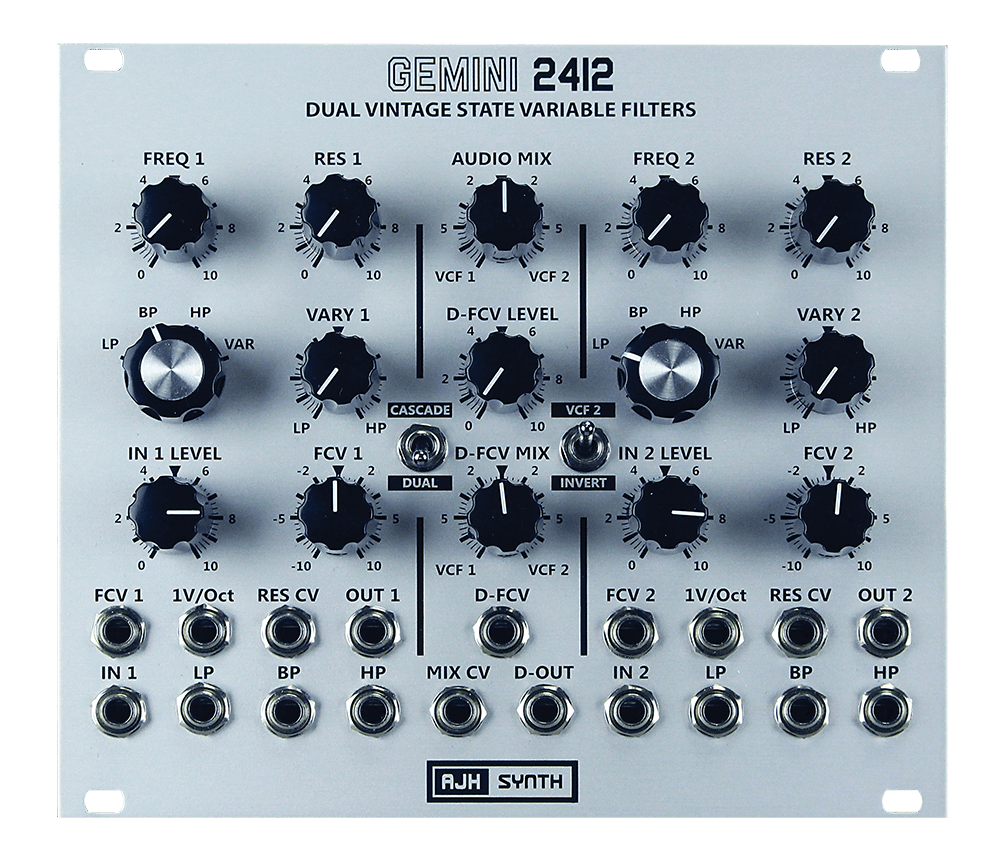
Both sides of the module are largely the same, offering low-, band- and high-pass filter types. These are accessed by selecting one of the dedicated outputs for each, or by using the main output – with the filter type being selected via a dedicated pot, offering the same three filter types, along with a variable option.
Here, it’s possible to sweep from a low pass, through to a notch filter and on to a high pass, using the dedicated pot. Cutoff Frequency and Resonance are ubiquitously present on both sides, with the additional ability to control Resonance via CV, and to track the frequency cutoff from a dedicated volt-per-octave CV input. An attenuverter also allows for further CV-based cutoff control.
The Gemini is so rich in tonal colour, it’s difficult to know which harmonics to hang onto first! There’s a lovely wispiness to the top end, even without resonance applied, which will always be ripe for cutting through a mix – but I’ve always loved the fact that this style of filter doesn’t suffer from the same low-end signal drop, as found elsewhere when resonance is increased in low-pass mode. The signal remains fat and unadulterated, aside from the tonal colour – which leaves you wanting more of every available frequency.
Switching to High Pass mode summons that classic Oberheim vowel-filter treatment (I was forced to start pulling faces in an attempt to mirror the Gemini, with the unavoidable condition known as Filter Mouth). It’s astonishingly good in this capacity, and this is only improved once you notice that two circuit jumpers are mounted to the rear of the module, which enable self oscillation to be induced and can be added to either side of the module independently.
The emanating oscillating tone is a slightly clipped Sine, which tracks perfectly when paired with the volt-per-octave input. With a little perseverance and envelope shaping, large Sine-based kicks emerged, as the self oscillation was put to good use. However, the output can run a little hot in this mode, meaning that before placing the signal into a VCA, attenuation elsewhere might help.
Although there is magic enough to be found simply with the two available filters, the real fun starts when you start to employ the controls found in the centre of the module, which allow for interaction between both sides. Using the dedicated flick switches, it’s possible to place the filters in either series or parallel.
Once in series, the filter can effectively become a 24dB/four-pole affair, as long as the cutoff points are matched; although, in my view, this is a little bit of a waste of resources, once you discover what else can be achieved. The central components will allow for the blending of the two sides, either manually or under CV control.
The audio from both sides may be mixed, outputting from a central patch point, while the cutoff of both sides may also be controlled centrally, with an offset applied via the cutoff in each filter section.
It is with both of these facets in mind that the addition of a modulating signal induces some beautiful colours and distortions. The straight addition of an LFO will have the two signals fading nicely, but modulate with a signal in the audio range and the explosion of tonal colour is beguiling and wavetable-like.
While this is essentially a filter module, it goes far further, providing an interplay between both filters which can open up a Pandora’s box of tones. As a basic filter, it’s outstanding, but as a tool for tonal creation, it’s off the chart.
Mega-Phase 12
Depending on where you sit with the history of commercial music, you may well have memories of the sound of phasers coating many guitar tracks from the 70s. However, one of the most simplistic and creative of phaser placements has to be within the groundbreaking electronic album Oxygene by Jean-Michel Jarre.
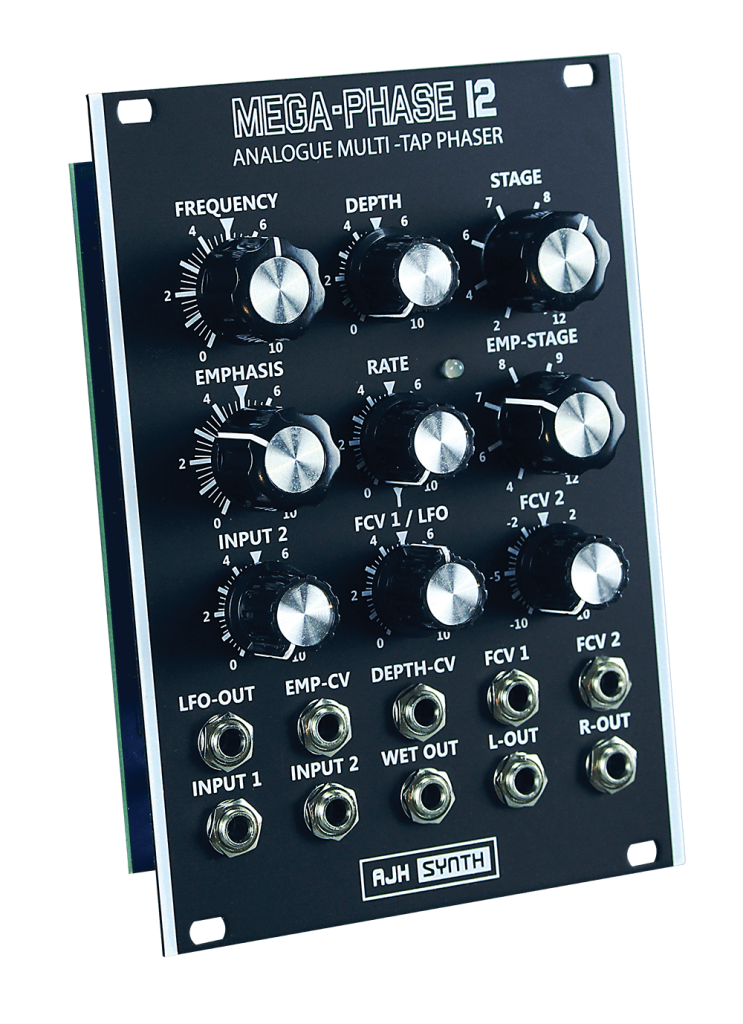
As highlighted by the man himself, it’s surprising what you can do with a little bit of “boring old white noise”, as he describes it – together with a good-quality phaser, the combination which gave us the backdrop to many of the beautiful shifting timbres that graced that famous album.
Beyond the Stone Age
So what we have here is a phaser modelled on the original Small Stone phaser, from Electro-Harmonix, with a little help and input from others along the way. According to AJH, the concept started about 15 years ago, when Allan Hall purchased and built an Equinoxe phaser from Tony Allgood of Oakley Sound. This had architecture related to the original 70s Small Stone phaser which, as the name suggests, was made famous in electronic circles by JMJ. Allan not only turned it into a Eurorack module from a 5U format, but added more stages, taking it from the original four-stage pedal design, to a full-on 12-stage design, while adding a few other features along the way.
It was only last year that Allan was reminded of its existence, having been contacted by a musician who borrowed it. At this point, AJH decided it would make a great addition to the AJH product line, as well as bringing a much valued bit of kit to the Eurorack party.
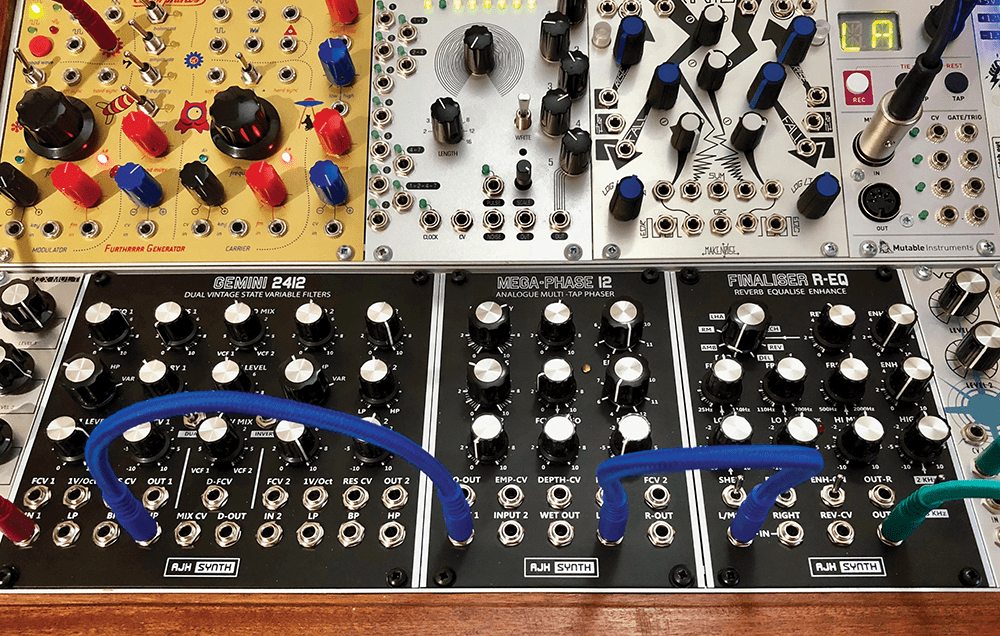
Settings on the module are handled by no fewer than nine pots, which is about eight more than you would normally find on a phaser pedal, which gives a good idea of the degree of control available to the user. Across the top, the Frequency control sets the point-of-centre for the phase, while the Depth pot acts as a wet-to-dry control. The number of stages are selected along eight points between two and 12, while an inbuilt LFO rate control will dictate the speed of phaser oscillation.
There is a handy LFO out, too, meaning the straight oscillation may be exploited elsewhere in the modular, if required. The Emphasis pot increases resonance to a point of whistling, while alongside this, we have the ability to choose a particular stage to emphasise, which is a pretty unique trick and all part of this interesting redesign of the vintage classic.
The Mega-Phase conforms to traditional phaser types, by offering a mono input, but with a pair of outputs. The left output gives us the usual traditional phased output, while the right output has a clever little trick up its sleeve, by offering the emphasis stage in isolation. This means that, while you might have a four-stage phaser in operation, the user can choose a stage to emphasise by taking a separate line and placing it on the opposite channel. In operation, this means that a very cool stereo image is created, with all sorts of colours appearing and disappearing as the phase mutates.
Jarring sounds
As if to rubber-stamp the Mega-Phase 12, the very first patch I created was with the aforementioned white noise. With the barest of cabling, I was transported right back to 1976, with those glorious undulations that are so familiar. What’s more, I barely had to try to get this sound to come good – but let’s not undersell this phaser as a one-trick wonder, because it’s far more capable than just this.
Thanks to a second audio input, I was able to add some tonal centre to the patch, by way of a drone, and thanks to a helpful attenuation pot linked to input 2, blending the signal was very easy indeed. A further CV input is offered for secondary control of the frequency point, which offered some really interesting movement, even with the existence of the onboard LFO. This can also be decreased or overwritten thanks to a further patch point, inviting another CV.
But it has to be said that the real party trick of this unit is the ability to choose the number of stages (up to 12), and then emphasise a stage of choice, which can be separated out into a stereo signal. This offers real diversity, which is unique and colourful as the phase wrangles its input.
I should also point out here that the module is quite noisy: in fact, it’s capable of producing self oscillation without an input signal, which is entirely down to this beast’s analogue nature, and the inherent design which the Mega Phase is built upon.
Personally, I didn’t find it a problem in any way. If you’re going to use this phaser, you’ll probably have a signal going through it, in which case the audio will easily cope with any noise distractions – so if you’re considering this as part of an exceptionally clean signal path, you might be barking up the wrong tree. It is what it is – namely, a beautiful analogue thing!
Finaliser R-EQ
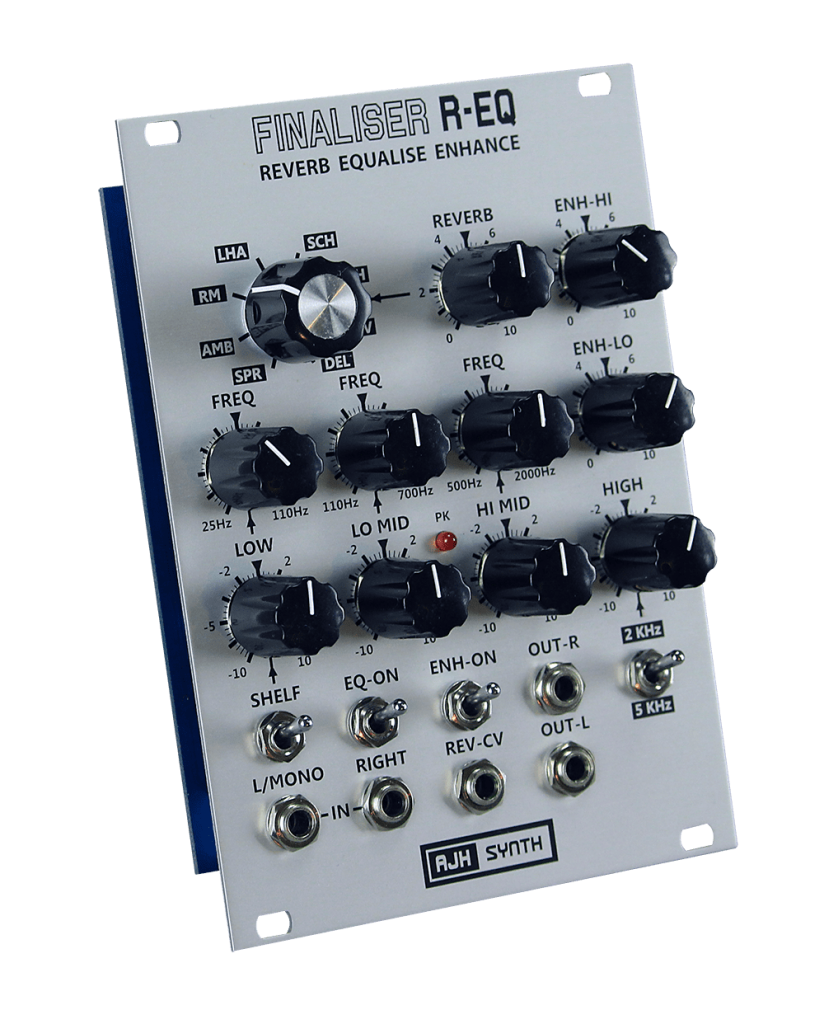
It’s a strange feature of Eurorack that there are not that many modules on the market designed to help the back end of the signal chain, as anyone who regularly attends live modular performances will have noticed. For many modular musicians, the way to go has always been to have a small outboard mixer, often with some form of outboard effects processor bolted on – normally in the form of a pedal. But now, thanks to AJH, there’s a sensible and compact Eurorack-mountable option that could easily become indispensable to any Eurorack user, whether live or studio bound.
Re-Enhance
This module is largely designed to take a mono signal, which will be treated and outputted in mono or stereo. This feels slightly at odds with the description on the front panel, which looks like it will accept a stereo input, but as is mainly the case with Eurorack, the input of a mono signal is far more likely. Regardless, the first element of treatment for the mono circuit will come courtesy of a four-stage equalisation circuit. This is perfect for tweaking overall tonal elements, with three sweepable pots in the registers of Low, Lo Mid and High Mid, and a cut/boost pot which is switchable between 2kHz and 5kHz, to look after the high-end frequencies.
Next up is an enhancer section, which will drive in both the lower and higher frequency ranges, with individual amount pots for each. This drive can really be cranked up and is very pleasing – it’s reminiscent of the old Aphex Aural Exciter from some years back which, when coupled with the EQ, allows for plenty of bump to the mix. Even better is the ability to flick both elements in and out, via switches, which will doubtless be terrific for live users.
The final element to this unique module is the digital reverberation section, which offers a number of reverb types, including springs, halls and rooms. As an added quotient, there is a really cool reverse effect along with a fixed delay, which induces a nice dotted eighth-note rhythm, when playing with sequences at 120bpm. Regrettably, this is fixed in time, but makes a welcome addition to the complement of reverbs.
The sound here is crisp and clear, for the most part, with nice elements of impurity in the spring setting; while a single pot allows for control of Amount, which can also be placed under CV control. I think it would be wrong to consider this a bespoke reverberation device, as its main directive is to add a little bit of space and colour, which it does beautifully – particularly when coupled with the enhancer and EQ.
Do I really need this?
It’s probably fair to say that all Eurorack systems could use at least one of these modules, but let’s consider each in turn. The Gemini is a stunningly good filter, with credentials way beyond purely acting as a filter in a subtractive system, and it will complement other designs very well, especially if you have tighter Roland-styled filters in your rig.
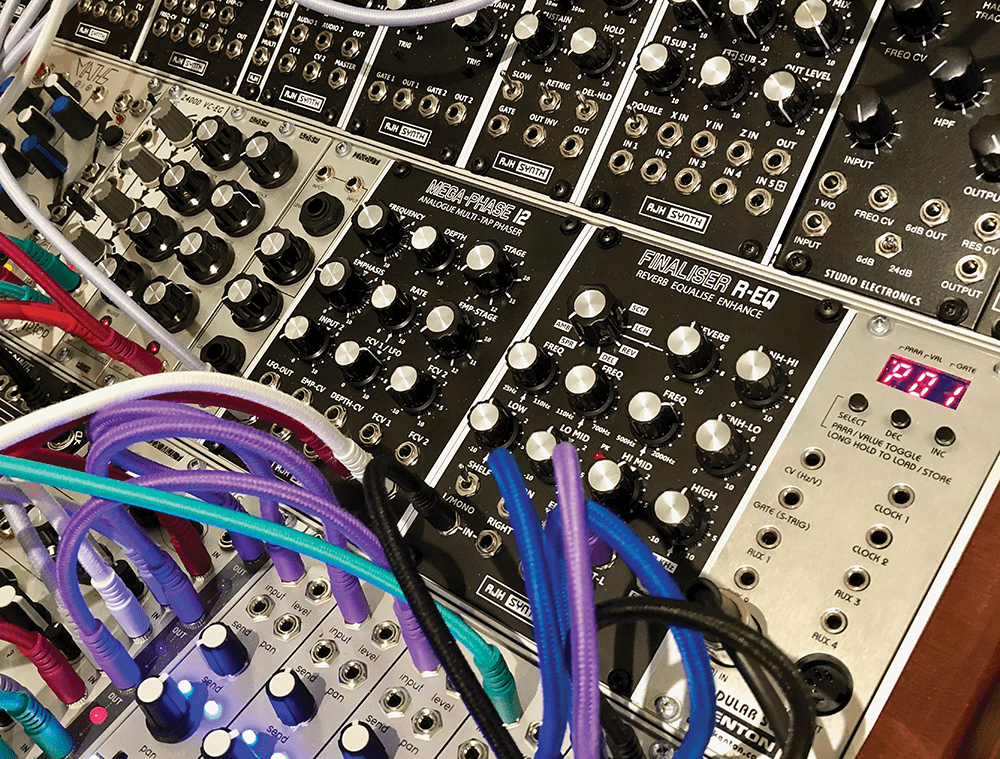
The Phaser and Finaliser could be considered less useful to the majority, but if you have a hankering for a phaser, this is about the best example of one you will find. The Finaliser is a perfect end to a signal chain, which will easily add colour and tone to your Eurorack’s sound, while the Reverb could become a programmed part of a larger patch, thanks to its CV control.
The final reckoning
It’s no surprise, given AJH’s pedigree, that this trio of modules delivers in abundance. The filter is the main event, taking the original Oberheim concept and exploring the power of two, while maintaining the essence of an SEM filter; while the Mega-Phase 12 is undoubtedly one of the finest phasers I’ve ever heard. Noisy by design, it reminds me of what I love about the early electronic recordings from the mid 70s, while the Finaliser R-EQ is an exceptionally useful utility for bringing the final part of the signal to life. Of course, at £345 a pop, these are not cheap modules, but they come with the usual outstandingly rugged AJH build quality, which we have come to expect, and to my mind, the quality on all fronts is undeniable.
Alternatives
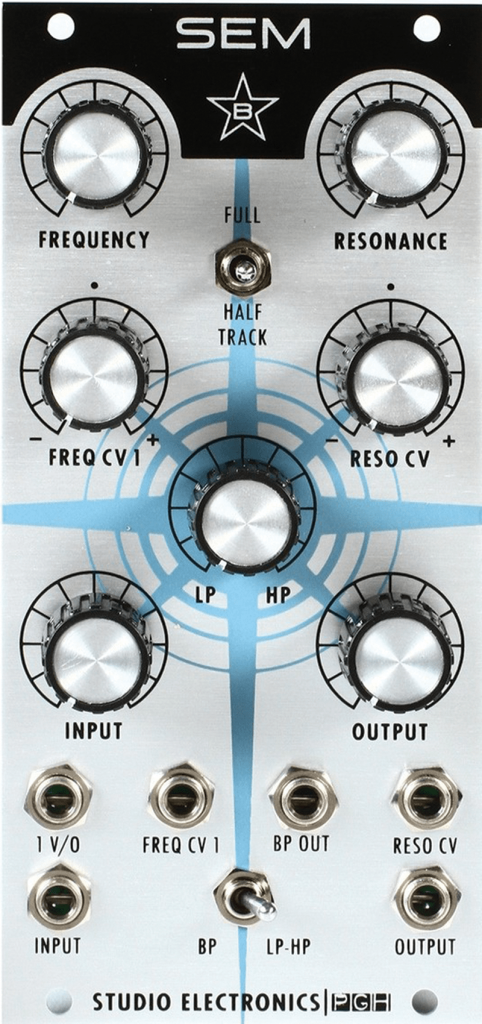
Studio Electronics
SEM Filter £259
SE have great form when it comes to remodelling classic filters – the SEM offers a single filter with plenty of grunt, as the input stage overdrives very nicely, which is a great addition to the original Oberheim concept.

TipTop Audio
Z-DSP Signal Processor £299
A classic for Eurorack based effects, the Z-DSP offers a myriad of great digital reverbs and delays. It’s expandable, thanks to its card-based operation, and fully programmable. As you’d expect, there’s plenty of CV control, too.